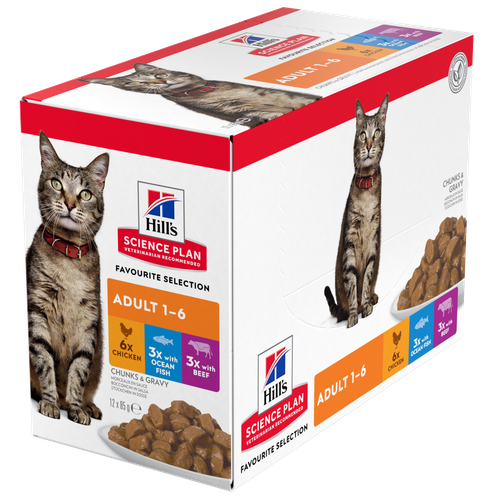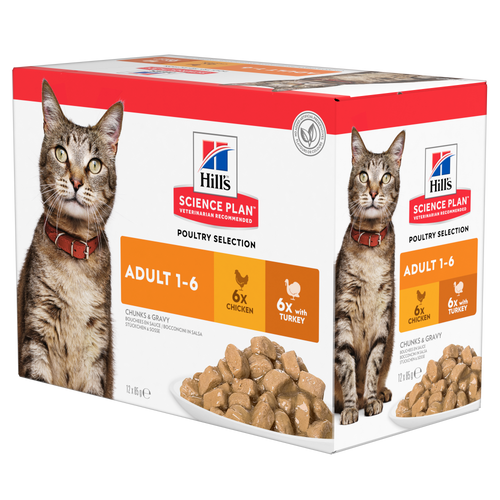
-
Find the right food for your petTake this quiz to see which food may be the best for your furry friend.Find the right food for your petTake this quiz to see which food may be the best for your furry friend.Featured products
 Sensitive Stomach & Skin Dog Food
Sensitive Stomach & Skin Dog FoodHill's Science Plan Sensitive Stomach & Skin Adult Wet Dog Food with Chicken is a complete premium dog food for adult dogs from 1 year. This savoury tinned loaf is enriched with ingredients that support digestive health & skin care.
Shop Now Perfect Weight Small & Mini Adult Dog Food
Perfect Weight Small & Mini Adult Dog FoodHill's Science Plan Adult Small & Mini Dog Food with Turkey is a complete premium pet food for adult small dogs from 1 year old that are prone to weight gain or slightly overweight. This deliciously smooth mousse is formulated to deliver the appropriate amount of energy to support weight maintenance in adult dogs.
Shop Now Perfect Digestion Small & Mini Adult Dog Food
Perfect Digestion Small & Mini Adult Dog FoodHill's Science Plan Perfect Digestion Small & Mini Adult Dog Food with Turkey is a complete premium pet food for small breed adult dogs aged 1–6 years. This deliciously smooth mousse is precisely balanced to deliver the appropriate amount of energy and to support digestive health in adult, small breed dogs.
Shop NowFeatured products Mature Adult Wet Cat Food with Chicken
Mature Adult Wet Cat Food with Chicken
Tender chicken chunks in gravy for mature adult cats. Made with easy-to-digest ingredients, high-quality protein for lean muscle maintenance and antioxidant vitamins C+E for optimal health.
Shop Now Light Adult Multipack Wet Cat Food with Chicken & Ocean Fish
Light Adult Multipack Wet Cat Food with Chicken & Ocean FishTender chicken chunks in gravy for cats, with L-carnitine and fewer calories for ideal weight management. Packed with high-quality protein, omega-6s, and vitamin E for shiny fur and healthy skin.
Shop Now Adult Multipack Wet Cat Food with Beef, Ocean Fish & Chicken
Adult Multipack Wet Cat Food with Beef, Ocean Fish & ChickenTender chunks in gravy for cats, with high-quality protein to maintain lean muscle. With vitamin E and omega-3s & -6s for healthy skin and balanced minerals to support healthy vital organs.
Shop Now -
Dog
- Dog Tips & Articles
-
Health Category
- Weight
- Food & Environmental Sensitivities
- Urinary
- Digestive
- Joint
- Kidney
-
Life Stage
- Puppy Nutrition
- Adult Nutrition
- Senior Nutrition
Cat- Cat Tips & Articles
-
Health Category
- Weight
- Skin & Food Sensitivities
- Urinary
- Digestive
- Kidney
-
Life Stage
- Kitten Nutrition
- Adult Nutrition
Featured articles The Incredible Science Behind Your Pet's Microbiome
The Incredible Science Behind Your Pet's MicrobiomeLearn what your pet's microbiome is, how it contributes to your pet's gut and overall health, and why nutrition is important in maintaining healthy microbiomes.
Read More The Right Diet For Your Pet
The Right Diet For Your PetIn people, the right diet is very important. If you are eating the wrong way for your metabolism, activity level, age and lifestyle you could end up with health issues.
Read More Show some love with wet foods: a great choice for pets with health issues
Show some love with wet foods: a great choice for pets with health issuesShow some love with wet foods: a great choice for pets with health issues.
Read More -


If your cat won't use a litter tray, there is likely to be an obvious reason.

Here are the most common causes and some solutions to try:
Dirty litter trays: Cats don't like using a tray if it is heavily soiled.
Solution - Litter trays should be cleaned out completely every couple of days and topped up with fresh litter daily once the solids and clumps are removed.
Put off by litter:
Solution - Using scented litter, deodorants or disinfectants with strong smells may put the scent-sensitive cat off using the tray. Use a mild detergent and hot water or disinfectant specifically recommended for tray cleaning. Cats learning to use the tray need to establish it as the appropriate toilet site and too frequent cleaning may weaken the association.
Wrong type of litter:
Solution - Changing the consistency or type of litter may put the cat off using it. Hard wood-based pellets may have been acceptable as a kitten but as cats get heavier there are some that object to walking on the uncomfortable surface. Cats prefer fine grain litter with the consistency of sand with no scented deodoriser. If you want to change the type you use, mix the new one in gradually over a week to gauge the cat's reaction.
Position of the litter tray:
Solution - If the tray is positioned in the open where a dog, children or other cats disturb it, the cat may feel too vulnerable to use it. Instead they may seek a more secure spot behind the television. Cats may not like to use a tray if it is next to a noisy washing machine or tumble dryer. Place the tray in a quiet corner where the cat only has to watch in one or two directions at once rather than in the open or in a thoroughfare. Placing food near the tray will put cats off using it so place feeding bowls elsewhere.


Tasty Tips
Type of litter tray:
Solution - Some cats prefer the security of a covered tray whilst others prefer an open tray, as it offers more options for escape. If you normally use an open tray it may be worth purchasing one with a lid or vice versa. An inverted box with one side cut out or careful positioning of house plants may provide the necessary privacy. Some covered trays have flaps over the entrance which could be one obstacle too many for the more insecure cat.
Bad associations:
Solution - Occasionally a cat decides not to use a tray because it has had a bad experience there. Giving medication or touching a cat whilst using the tray may be sufficient to create a bad association. Repositioning the tray to a quiet spot may help.
Early training: Kittens will often soil in the house when they are young if they are given immediate access to large areas.
Solution - When kittens first arrive in their new home they are only weeks away from their original litter training by their mother. Their bladder and bowel control are not as developed as an adult so it is important that the young kitten has easy access to the litter tray at all times. It is advisable to confine the kitten to one room initially with increasing periods of time to explore other areas after a few weeks. Every time the kitten uses the tray it is establishing an entrenched behaviour that will be maintained throughout their life.
If you need any more advice or help with your cat please contact your local vet or vet nurse and they will be able to advise you further.


One of our staff authors prepared this article for you
Related products

Tender chicken chunks in gravy for cats, with L-carnitine and fewer calories for ideal weight management. Packed with high-quality protein, omega-6s, and vitamin E for shiny fur and healthy skin.


Tender chunks in gravy for cats, with high-quality protein to maintain lean muscle. With vitamin E and omega-3s & -6s for healthy skin and balanced minerals to support healthy vital organs.

Tender chicken chunks in gravy for mature adult cats. Made with easy-to-digest ingredients, high-quality protein for lean muscle maintenance and antioxidant vitamins C+E for optimal health.
Related articles

Feeding time can be a wonderful bonding opportunity for you and your cat. Find out how to make the most of it and create a healthy habit with HIll's Pet UK.

Discover what you can do to spot and support a sensitive cat stomach. See what routines and food you can implement to help your cat be happy and healthy.

Find out about how you can support your cat's digestion to boost overall health. Diet is key to a long and happy life for your cat, so discover what you can do.

Find the right Hill

Put your cat on a diet without them knowing
Our low calorie formula helps you control your cat's weight. It's packed with high-quality protein for building lean muscles, and made with purposeful ingredients for a flavourful, nutritious meal. Clinically proven antioxidants, Vitamin C+E, help promote a healthy immune system.
Put your cat on a diet without them knowing
Our low calorie formula helps you control your cat's weight. It's packed with high-quality protein for building lean muscles, and made with purposeful ingredients for a flavourful, nutritious meal. Clinically proven antioxidants, Vitamin C+E, help promote a healthy immune system.

